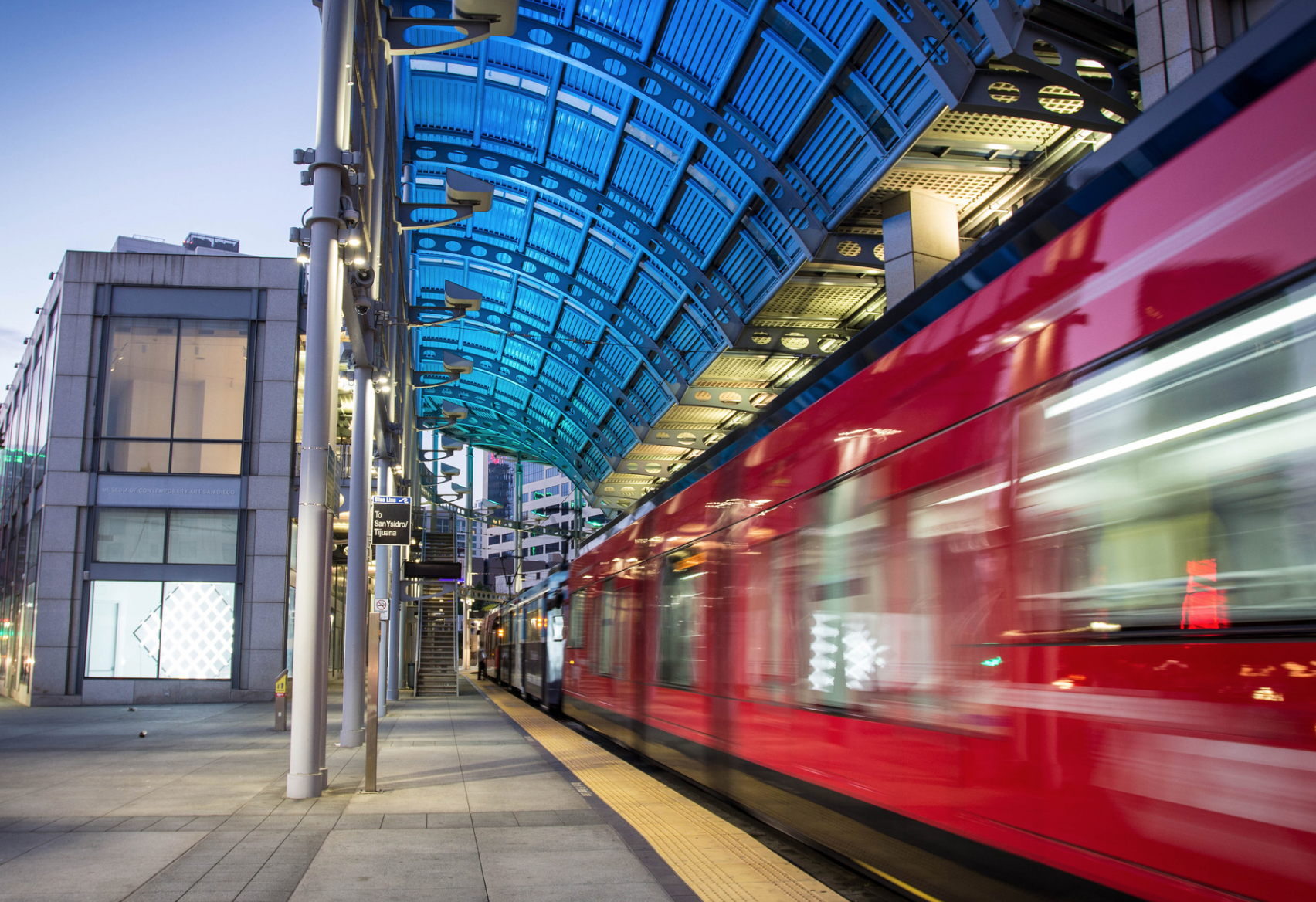 Photo: Flickr user Photos by Clark.
Photo: Flickr user Photos by Clark.Houston's sprawl may not be so bad by certain measures, but when it comes to access to jobs for workers in low-income neighborhoods in auto-oriented, transit-light Houston, sprawl matters. A new study on commuting in the San Diego region captures just how significant some of those barriers to jobs can be.
Published in the journal Transportation Research Part A, led by Marlon Boarnet, a professor at Sol Price School of Public Policy, University of Southern California, the study compares the number of low-wage jobs within a 30-minute commute by car and transit in San Diego and finds that while low-income neighborhoods might appear to have physical access to low-wage jobs, there were significant gaps when compared to workers who commuted by car. In essence, workers from low-income neighborhoods who relied on transit spent more time commuting, with fewer jobs readily accessible. Part of the problem: first- and last-mile connections.
For those who walk to or from bus stops, the study found that first or last mile could add an average of 12 minutes to the trip. The study also found that the area with the lowest number of jobs available via a 30-minute car commute still had more job opportunities than the area with the highest number of jobs available via a 30-minute transit commute.
The study measures access to jobs in two scenarios: first, by looking at the number of low-wage jobs within a 30-minute commute and secondly, by adjusting these numbers of jobs by potential competition with other workers. The adjustment accounts for higher competition amongst workers looking for jobs accessible via car because of the limited transit network in the region. The findings are significant; the number of jobs available to people living in census tracts with the lowest access to jobs by car is still higher compared to jobs available to people living in census tracts with the highest access by transit. Specifically, for those who walk to and from transit stops, there is a 30 percent difference in the number of low-wage jobs they can get to compared to driving.
One strategy for addressing these gaps is to look at the first- and last-mile connectivity, which the research suggests could have a significant impact on travel times and accessibility. Specifically, utilizing bicycle or ride-sharing services to close the first- and last- mile gap has the potential to improve job access as much as aiming to cut half of the distance between each bus operating along the same route (hence reducing wait time at bus stops). Improving transit service in this way doesn’t just make a more efficient network, it also expands economic opportunities provided by living in neighborhoods with access to transit.
As Houston’s own transit agency engages in public listening sessions to figure out its next steps, studies like this one point toward important investments that could be made in the system. Better integrating bicycling with transit and encouraging or providing ride-sharing services to accommodate those who do not own a car can provide a powerful network for the Houston region. With the City of Houston also considering a variety of investments for its Complete Communities initiative, closing the first- and last-mile gap for residents in these communities can go a long way in increasing their ability to access jobs and other opportunities outside of their neighborhood.
Compared to strategies such as reducing headways or wait times at bus stops that only benefit those who can access transit, closing the first- and last- mile gap increases the number of potential transit users by making it easier for those living beyond walking distance to transit stops or those not able to walk to or from transit stops due to disability or other reasons. And it isn’t just about economic opportunity. Facilitating connections to transit means more people will have the opportunity to access everything the city has to offer, from schools and healthcare facilities to parks and recreation.

